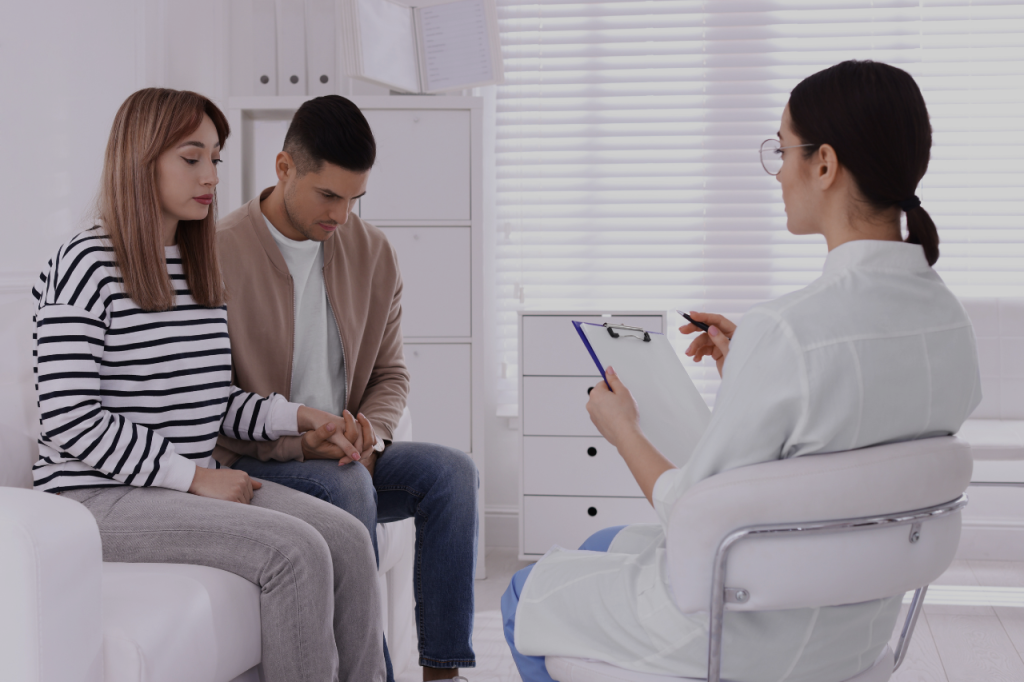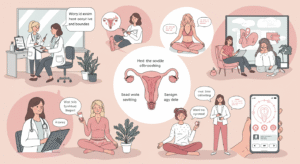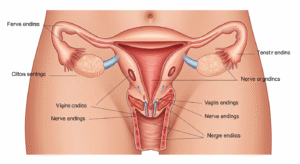1) What is arousal?
Sexual arousal includes physical signs (increased blood flow to the genitals, lubrication, swelling), mental interest (fantasy, anticipation) and emotional readiness. For women, physical and mental arousal don’t always happen in the same order — sometimes feelings of desire follow physical sensations, and sometimes desire comes first. That variability is normal.
Arousal is not simply “on/off.” It’s a process affected by hormones, nervous system signals, mood, relationship context and external stressors. Understanding which of these influences your experience makes it easier to fix problems.
2) How arousal differs between people and over time
Everyone’s pattern is unique. Young women, postpartum women, perimenopausal and postmenopausal women can all experience different patterns of arousal. Day-to-day life — stress, sleep, medications, relationship issues — can change arousal quickly. Expect variability; expecting a fixed “normal” often causes unnecessary worry.
Because arousal changes with life stages (pregnancy, breastfeeding, menopause) and health conditions (thyroid problems, diabetes), context matters. That’s why a brief, targeted history is the first, most useful step in any clinical evaluation.
3) Common sex problems that affect arousal
When people talk about “sex problems,” common issues that reduce sexual arousal include:
- Low desire — little interest in sex or low sexual thoughts.
- Arousal difficulties — insufficient lubrication, lack of genital engorgement, or not feeling physically “turned on.”
- Pain with sex (dyspareunia) — pain quickly reduces arousal and can create fear or avoidance.
- Orgasm difficulty — trouble reaching climax, which can feed back into reduced interest.
- Performance anxiety or relationship problems — worry about pleasing a partner or conflict reduces mental availability for arousal.
Identifying which of these is present helps choose the right sex treatment.

4) Why arousal can fail — common causes
Most arousal problems have multiple causes. Here are the typical contributors grouped for clarity.
Biological / medical
- Hormonal shifts: pregnancy, breastfeeding, perimenopause and menopause change estrogen and testosterone and often cause vaginal dryness or decreased genital sensitivity.
- Chronic disease: diabetes, thyroid disease, neurological conditions and cardiovascular disease can affect blood flow and nerve function.
- Medications: certain antidepressants, blood pressure drugs and some hormonal contraceptives can blunt sexual response.
- Pain conditions: vulvodynia, vaginismus, endometriosis or infections commonly interrupt arousal because sex becomes associated with discomfort.
Psychological
- Stress, anxiety and depression reduce mental bandwidth available for sexual thoughts and fantasy.
- Past sexual trauma or unresolved negative experiences can make arousal unsafe or frightening.
- Body image and self-esteem shape whether someone feels sexually open.
Relational and lifestyle
- Poor communication with a partner, mismatched desire, or unresolved conflict reduce emotional availability for sex.
- Fatigue, shift work and parenting stress are some of the most common, day-to-day reasons for low arousal.
Because these factors interact, a combined, stepwise sex treatment plan works best.
5) Practical, no-prescription steps to try today
Try these low-risk, high-return steps for 4–6 weeks and track what changes:
- Improve sleep and reduce evening stress — even modest changes to sleep help mental availability for sex.
- Limit alcohol before intimacy — alcohol may lower inhibitions but often blunt arousal.
- Use a quality water-based lubricant for dryness or discomfort — immediate relief can restore positive sexual experiences.
- Schedule short intimacy times focused on connection (touch, conversation) rather than intercourse.
- Practice sensate focus — non-demanding touch exercises that reduce performance anxiety.
- Keep a simple diary: note days when arousal is better or worse and what else was happening (medications, sleep, stress, menstrual cycle).
If these help, great. If not, move to a clinical check.
6) What a clinical assessment looks like
A clinician (GP, gynecologist, sexual health specialist) will do a focused evaluation to identify causes and guide sex treatment:
- Full medical and medication history (including contraceptives and mental-health medications).
- Screen for depression, anxiety and past trauma.
- Pelvic exam to look for signs of infection, atrophy, or pelvic pain disorders.
- Targeted tests only when they will change management (for example, thyroid tests or specific hormone checks).
- Discussion of relationship context and goals — what changes you want to see.
A thoughtful, stepwise plan follows this assessment: simple fixes first, then pelvic health or therapy, and specialist medical options if needed.
7) Evidence-based sex treatment options
Treatment should be tailored and often combines approaches.
A. Education & behavioural approaches (first-line)
- Sex education: realistic expectations about arousal, normal variability and anatomy reduce worry.
- Sex therapy or counselling: individual or couples therapy improves communication and addresses anxiety or trauma. These therapies are often effective for psychological drivers of low arousal.
B. Pelvic health interventions
- Pelvic physiotherapy for pelvic floor tension, dyspareunia or vaginismus — a trained physiotherapist teaches relaxation and desensitization.
- Topical vaginal treatments (moisturizers, local estrogen for menopausal symptoms) reduce dryness and pain, improving the chances of arousal.
C. Medical and pharmacologic options
- Review and adjust medications that suppress arousal — this simple step often helps when a medication is the main culprit.
- Hormone therapy: local estrogen for vaginal atrophy is highly effective at reducing dryness and pain in menopausal women; systemic options are individualized.
- Select medications for low desire: in some settings, drugs approved for hypoactive sexual desire disorder may be considered for selected patients after specialist assessment. Benefits and side effects vary, so careful selection is necessary.
D. A combined approach
Most clinics use a stepped-care, multidisciplinary model: therapy + pelvic health + targeted medications when needed. This combined approach typically gives the best long-term outcomes.
8) Helpful enhancements — checklists, conversation starters, exercises
Appointment checklist
- Note the start and pattern of arousal problems.
- List all medicines and supplements.
- Record sleep, stress, relationship events and menstrual cycle patterns.
- Write one or two concrete goals for treatment (e.g., reduce pain, increase desire twice weekly).
Conversation starters with a partner
- “I’d like to talk about our sex life — sometimes I don’t feel turned on and I want us to work on it together.”
- “Can we try non-sexual touch for 15 minutes a day this week and see how it feels?”
At-home exercises (try for 4–6 weeks)
- Sensate focus: alternate short sessions of touch focusing on sensation, not sexual performance.
- Breathing + pelvic relaxation: practice slow diaphragmatic breaths and pelvic relaxation before intimacy.
- Micro-goals: one small intimacy goal each week (walk together, cook together, no phones for 30 minutes).
9) Author & review box
Author: Dr. Kusuma — Founder, Female Sexual Health by Dr. Kusuma — 10 years’ clinical experience in gynecology and sexual medicine.
Clinic: Androcare — Swetha Scans, 67-A, Journalist Colony, Road No. 70, Jubilee Hills, Hyderabad — 500033.
Website: femalesexualhealth.in
Clinical reviewer: Senior gynecologist / sexual medicine consultant (content reviewed for clinical accuracy and evidence-based recommendations).
If you are local to Hyderabad and want a confidential, evidence-based assessment, the clinic offers multidisciplinary care — medical review, pelvic physiotherapy and sex therapy pathways.
10) FAQ
Q: Is trouble with sexual arousal normal?
Q: Will lubricants fix arousal problems?
Q: Could my medication be the cause?
Q: How long before I see improvement?
Q: Where should I start?
Closing practical takeaway
Sexual arousal is shaped by body, mind and relationship. If your arousal isn’t what you want it to be, start with one small, practical change today and track the effect. When simple steps don’t help, a careful clinical assessment and a combined sex treatment plan usually lead to steady improvement.
For local, confidential care in Hyderabad, contact Female Sexual Health by Dr. Kusuma at Androcare — Swetha Scans, 67-A, Journalist Colony, Road No. 70, Jubilee Hills, Hyderabad — 500033 or visit femalesexualhealth.in for appointments and resources.






